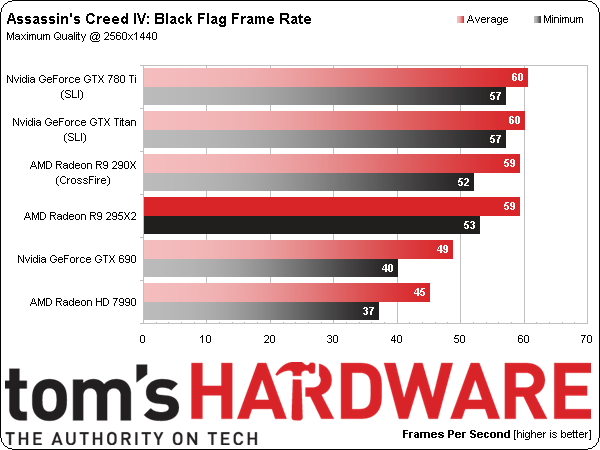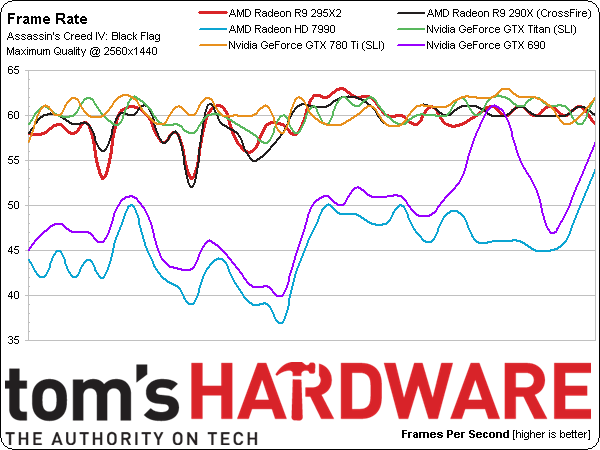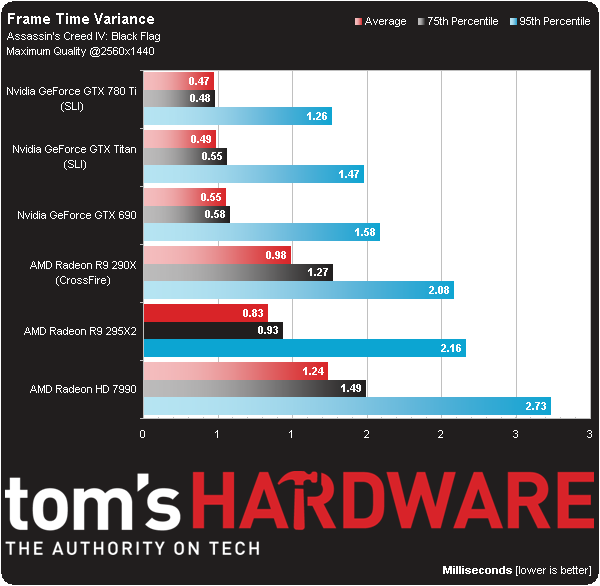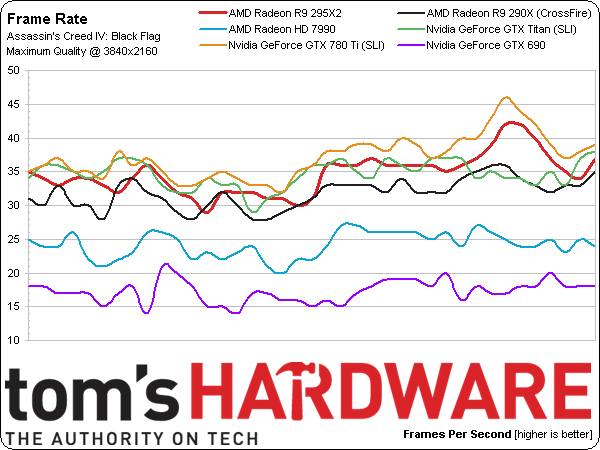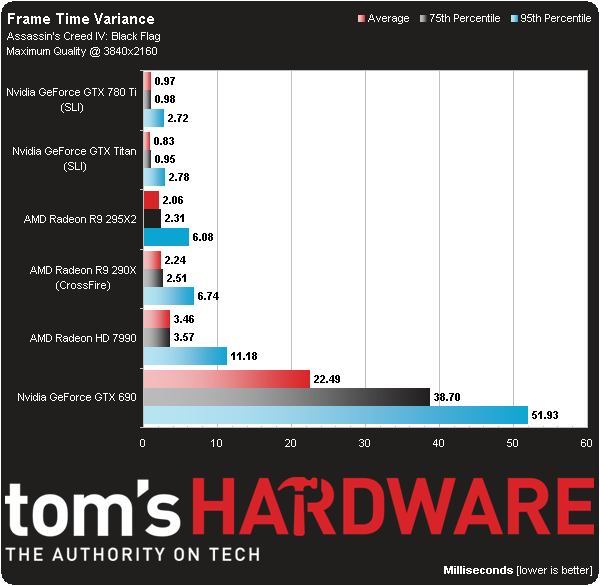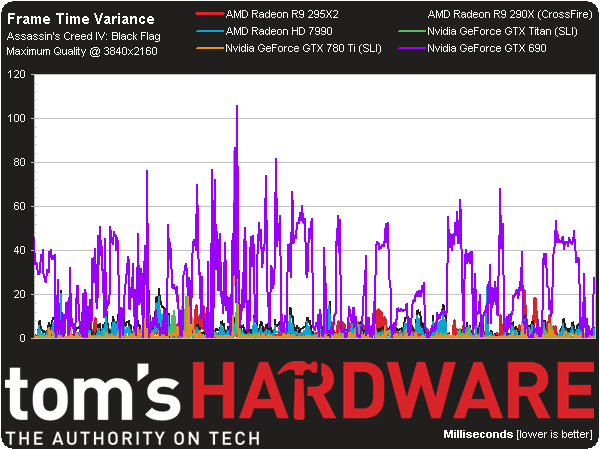Radeon R9 295X2 8 GB Review: Project Hydra Gets Liquid Cooling
“Do you have what it takes?” AMD asks, purportedly referring to the big budget and beefy power supply you need before buying its new Radeon R9 295X2. We benchmark the 500 W, dual-GPU beast against several other high-end configs before declaring a winner.
Results: Assassin’s Creed IV: Black Flag
2560x1440
Like Arma 3, four of our six graphics solutions are bottlenecked in Assassin’s Creed IV using the game’s most demanding quality features. AMD achieves slightly lower minimum frame rates than Nvidia, though the R9 290X in CrossFire and 295X2 never dip below 50 FPS.
See how the top four configurations maintain a fairly narrow performance band? Those solutions appear limited by some aspect of our overclocked platform. The Radeon HD 7990 and GeForce GTX 690 span a broader range dictated by the graphics workload.
AMD’s frame time variance is slightly higher across the board, though even our worst-case figures are still impressively consistent.
There are far more frame time spikes in Assassin’s Creed IV than there were in Arma 3, again, predominantly from AMD’s cards.
3840x2160
As with Arma 3, the apparent platform bottleneck in Assassin’s Creed IV isn’t as much of an issue at 3840x2160. Instead, these cards demonstrate low averages and less-than-ideal minimum frame rates using the game’s most taxing details.
The GeForce GTX 780 Tis don't appear to be limited by their 3 GB of GDDR5. Instead, the SLI array takes a first-place finish ahead of AMD’s Radeon R9 295X2 and Nvidia’s GeForce GTX Titans.
Our Assassin’s Creed IV benchmark requires a ton of manual intervention, so the frame rate over time charts isn’t as consistent as we’d like from one run to the next. The four fastest solutions clump up in a less-than-10 FPS-range, while the Radeon HD 7990 and GeForce GTX 690 drag along in unplayable territory.
Get Tom's Hardware's best news and in-depth reviews, straight to your inbox.
Nvidia’s GeForce GTX 780 Tis and Titans in SLI offer very low frame time variance. The Radeons are also well-behaved in this gauge of smoothness.
It’s the GeForce GTX 690 that encounters the most serious issues. That card simply isn’t a player at this resolution, though. So, while it’s good to illustrate the limitations of 2 GB per GPU at 3840x2160, I’ll refrain from mentioning the board’s performance every time we test a game at 4K.
Current page: Results: Assassin’s Creed IV: Black Flag
Prev Page Results: Arma 3 Next Page Results: Battlefield 4-
Marsian Gustrianda Many people doubt about Dual GPU Hawaii will be Blow Up. It seems AMD really do well job. Nice Looking CardReply -
ohim This card is like the Veyron of WV , show the world what you can do (R295x2) but you`ll still relay on the sales of your WV Golf for revenue (270x, 280x)Reply -
outlw6669 Impressive performance, temperatures and fairly low noise!Reply
I would prefer a bit lower price, but this looks like a great card for the gamer that has everything! -
gunfighter zeck the name Dreadnaught originated from Dread Nothing or, fear nothing.Reply
Boss ship. -
Maxamus456 Hope this price stays low and not get bloated from bit con miners like its predecessors.Reply -
blubbey So let me get this straight. It runs pretty cool, quiet, performs well and (for the moment) is able to play a good selection of games at 4k admirably and is priced competitively. Plus if you are going to drop a bit more on watercooling your GPUs (which is a possibility if you're spending $1200+) that gives this card even greater value. Nice work AMD.Reply -
marciocattini Wheres Tom's Hardware seal of approval? =( clearly this card diserves some love!Reply
